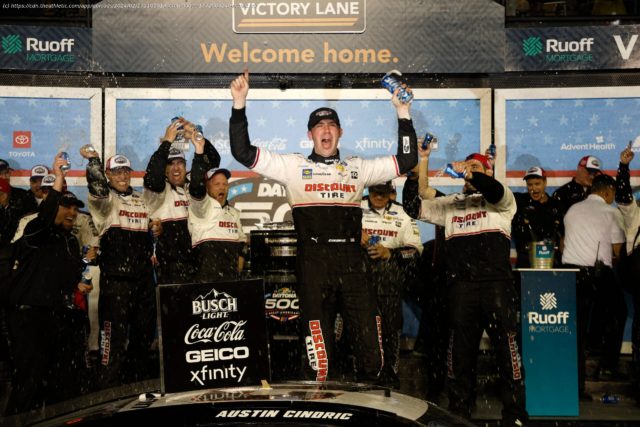There’s no bigger race for a NASCAR driver to win than the Daytona 500. But it’s one of the most random and chaotic events on the calendar.
Readers can now follow NASCAR, Formula One and other motorsports content separately. Customize your feed here.
DAYTONA BEACH, Fla. — NASCAR Hall of Famer Jeff Gordon won the Daytona 500 twice in his first seven seasons, later adding another victory six years later, in 2005. Surely, he figured, there would be more to come.
Then Gordon never won NASCAR’s biggest race again.
“You get into this frustration of, ‘Man, what am I doing differently?’” Gordon said.
The answer, oddly enough, was nothing.
Such is the nature of this crown jewel NASCAR race, which represents a unique contrast in the realm of top sporting events: It is NASCAR’s Super Bowl in so many ways, but also remains one of the least reliable indicators of greatness.
Some of NASCAR’s most legendary names, like Tony Stewart, Rusty Wallace and Mark Martin, never won this race. Meanwhile, five of the last seven Daytona 500 victors have gone winless in that season’s remaining 35 events.
“You would assume in the biggest race of the year, the best teams and drivers would always win,” said Joey Logano, the 2015 Daytona 500 winner. “But it’s not like that.”
Logano brought the fastest car to this year’s 500, qualifying on the pole position there for the first time in his career. But the style of racing at NASCAR’s so-called “superspeedways” like Daytona means there are no guarantees Logano will have a good performance in the race, when well over three-quarters of the field has a legitimate chance to win. (The race, originally scheduled for Sunday, has been postponed to Monday at 4 p.m. ET due to rain.)
The reason is rooted in safety concerns. If NASCAR Cup Series cars were allowed to travel around Daytona’s high-banked, 2.5-mile course without restrictions, they could top 200 mph and put both competitors and fans at increased risk.
By requiring each car to have a “tapered spacer” — a hole-filled aluminum block that reduces the airflow to the engines — NASCAR limits speeds to try and keep cars from getting airborne and flying into (or through) the fences that separate the fans from the racetrack.






